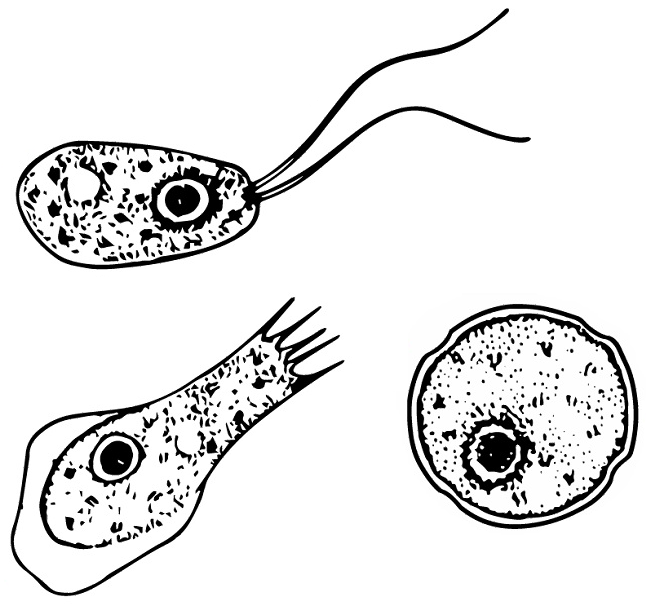Percolozoa
| Percolozoa | |
|---|---|
 |
|
| Different stages of N. fowleri | |
| Scientific classification | |
| Domain: | Eukaryota |
| (unranked): | Excavata |
| Phylum: |
Percolozoa Cavalier-Smith 1991 |
| Classes, Orders and Families | |
|
|
The Percolozoa are a group of colourless, non-photosynthetic excavates, including many that can transform between amoeboid, flagellate, and cyst stages.
Most Percolozoa are found as bacterivores in soil, fresh water and occasionally in the ocean. The only member of this group that is infectious to humans is Naegleria fowleri, the causative agent of the often fatal disease amoebic meningitis. The group is closely related to the Euglenozoa, and share with them the unusual characteristic of having with discoid cristae. The presence of a ventral feeding groove in the flagellate stage, as well as other features, suggests that they are part of the excavate group.
The amoeboid stage is roughly cylindrical, typically around 20-40 μm in length. They are traditionally considered lobose amoebae, but are not related to the others, and unlike them, do not form true lobose pseudopods. Instead, they advance by eruptive waves, where hemispherical bulges appear from the front margin of the cell, which is clear. The flagellate stage is slightly smaller, with two or four anterior flagella anterior to the feeding groove.
Usually, the amoeboid form is taken when food is plentiful, and the flagellate form is used for rapid locomotion. However, not all members are able to assume both forms. The genera Percolomonas, Lyromonas, and Psalteriomonas are known only as flagellates, while Vahlkampfia, Pseudovahlkampfia, and most acrasids do not have flagellate stages. As mentioned above, under unfavourable conditions, the acrasids aggregate to form sporangia. These are superficially similar to the sporangia of the dictyostelids, but the amoebae only aggregate as individuals or in small groups and do not die to form the stalk.
...
Wikipedia
